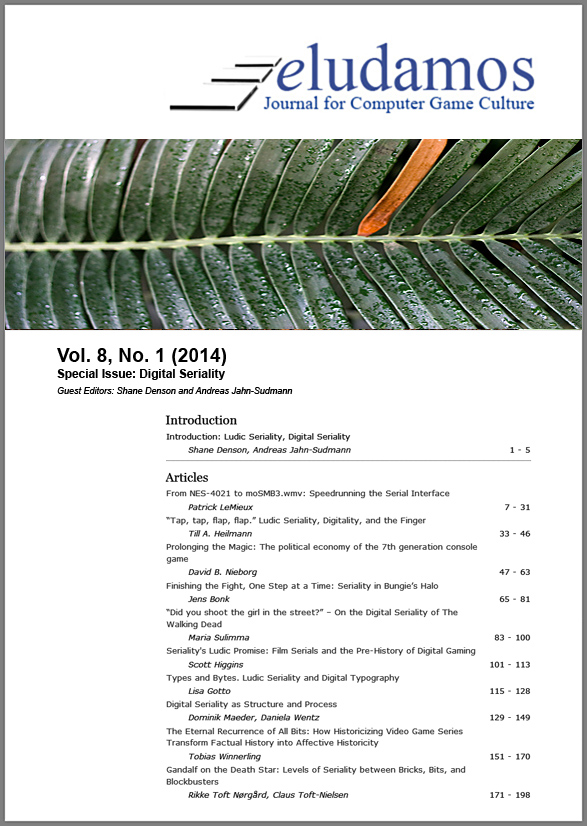Gandalf on the Death Star: Levels of Seriality between Bricks, Bits, and Blockbusters
DOI:
https://doi.org/10.7557/23.6161Abstract
Over the past 65 years millions of fingers have constructed their own worlds of wonder with LEGO bricks, and thousands of fingers have controlled LEGO figures through franchise-designed gameworlds of wonder with LEGO bits. Typically these tangible user-created story designs and kinaesthetic activities remain absent from the field of media studies in general and research on digital seriality in particular.
However, when it comes to contemporary blockbuster franchises such as the Skylanders, World of Warcraft, LEGO, Lord of the Rings or Star Wars universe, the conceptualization of digital seriality as solely relating to transmedia or even trans-transmedia storytelling are no longer sufficient. So, rather than trying to fit a somewhat square peg into a somewhat round hole the article develops an analytical comprehension of and conceptual framework for digital seriality through (i) taking a more play(er)centric and interactional approach field that a more in line with the concept of “new serialities,” (ii) uncovering and establishing the transformative and transgressive nature of play(er)centric digital seriality that emerge from actual “serialities-in-use,” and (iii) developing frameworks and conceptual models for serialities-in-use that are able to embrace these emerging play(er)centric aspects of digital seriality.
Our aim is not to oppose or question established contemporary understandings of digital seriality but to expand some of the parameters and categories. Thus, we explore not only “the aesthetic forms and cultural practices of serialization as they are articulated in and around interactive digital media” (Denson & Jahn-Sudmann 2013, p. 10-11) but also the kinaesthetic experiences and practices at the heart of playful serialities. Furthemore, answering Denson and Jahn-Sudmann’s call for a multi-pronged approach, therefore, we likewise hope to initiate a dialogue between (at least) two distinct fields of research: media/game studies and design/toy studies. Both echoing and expanding the efforts of Denson and Jahn-Sudmann, our focus here is on three sets of interrelations with respect to (digital) serialities:
- interrelations between transmission, transformation, and transgression on the one hand and world-building, world-sharing, and world-designing on the other;
- interrelations between technologies, social practices, and spaces on the one hand and franchise-centric, play-centric, and player-centric spaces of serialities-in-use on the other;
- interrelations between intra-texts, inter-texts, and para-texts on the one hand and what we call intra-actional, inter-actional, and para-actional levels on the other, including how they come together in the intra-ludic, inter-ludic, and para-ludic serialities described by Denson and Jahn-Sudmann.
The material immateriality and immaterial materiality that lies at the core of LEGO’s seriality - in its oscillation between digital bits and tangible bricks - accentuates how the experience of digital seriality is often the simultaneity of perceiving immersive and expansive worlds and of expressing yourself (kin)aestheticlly through technological engrossment in this continuing serial activity. Overall, the article posits digital seriality, as it e.g. emerges through experiencing LEGO Star Wars and LEGO The Lord of the Rings games and franchises, as something concurrently material (bricks & engaged technologies) and immaterial (bits & perceived worlds).
Publication Facts
Reviewer profiles N/A
Author statements
Indexed in
-
—
- Academic society
- N/A
- Publisher
- Septentrio Academic Publishing








